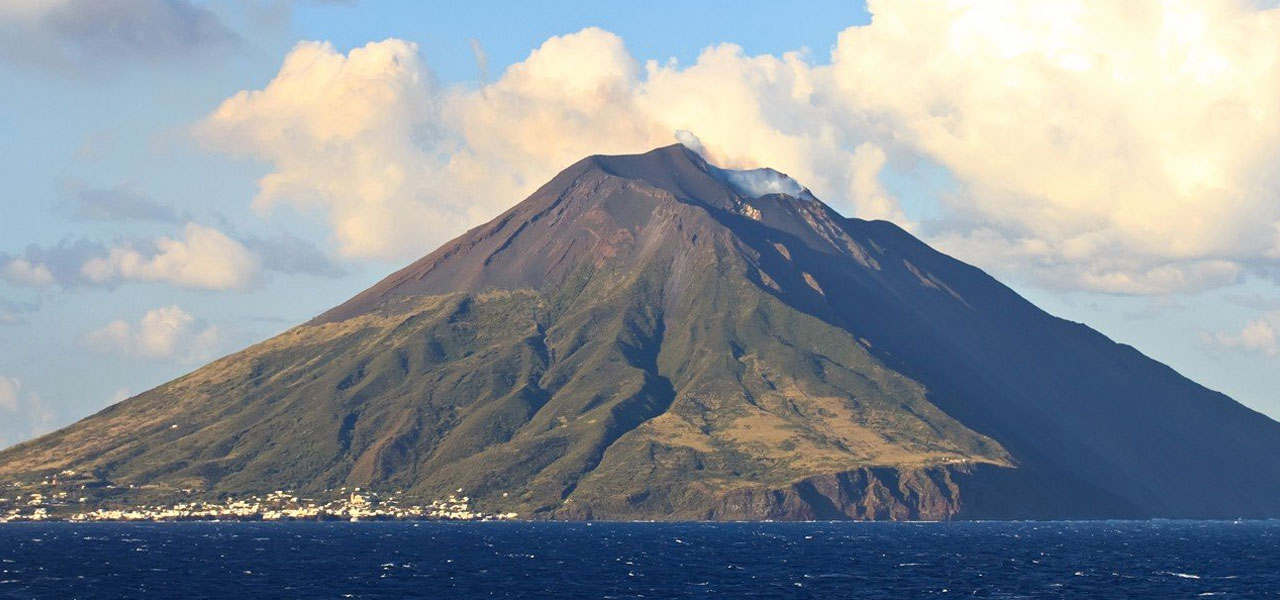Stromboli

Stromboli is one of the most active volcanoes in the world and has been almost continuously erupting since 1932. Since it has been active for most of the last 2000 years and its eruptions are visible at long distances during the night, it is known as the “Lighthouse of the Mediterranean”. Stromboli is widely known for its spectacular eruptions of molten rock fountains from its central crater, making it one of the most visited volcanoes in the world. Since these eruptions are so characteristic and well-known, geologists use the term “strombolian eruption” to clearly describe similar eruptive activity in other volcanoes.
Stromboli is the northernmost island of the Aeolian archipelago. Its base extends to about 1700 meters below sea level, and rises to a height of 924 meters above sea level. Like Etna, Stromboli represents a part of the Calabrian volcanic arc. The volcanoes of the Calabrian arc are associated with the subduction of the African plate under the Eurasian tectonic plate. Stromboli is located in a fault system, but the mechanisms that feed the volcano’s magma chamber, and their relationship to the fault system, are little known. Its activity has been recorded by historians for over 1000 years, ranging from slight degassing of lava flows to violent eruptions


